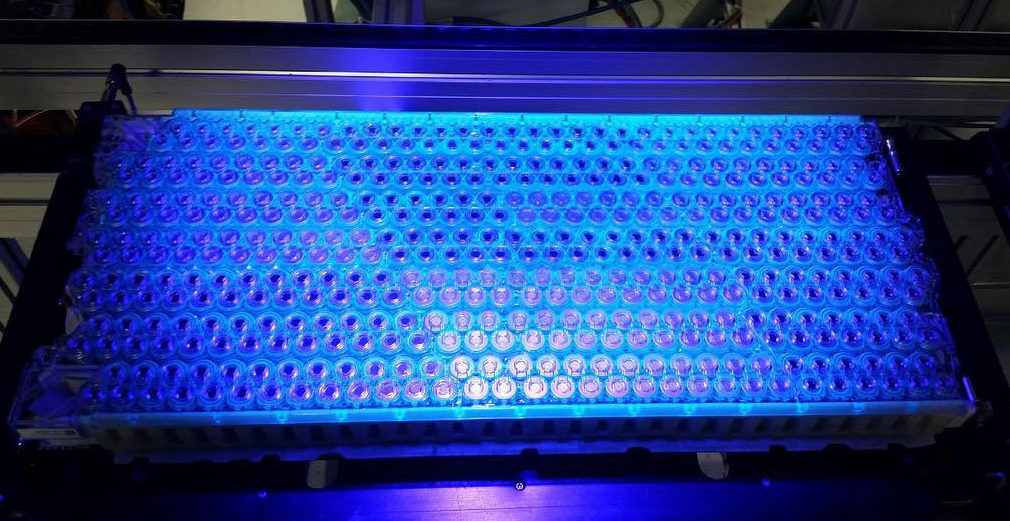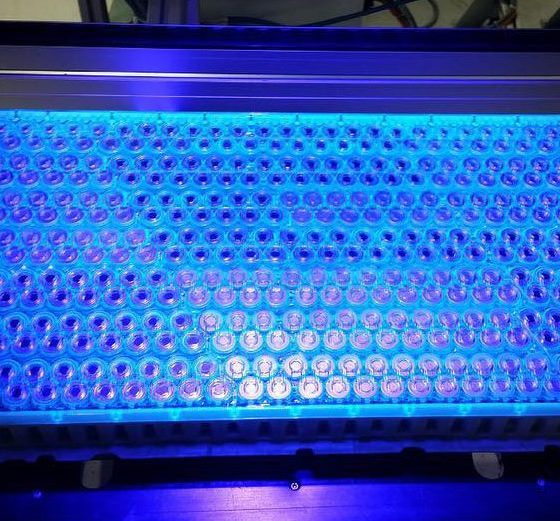

News
Tesla may have quietly acquired a new lithium-ion battery cell startup in CO
Recent observations by active members of the Tesla community suggest that the electric car maker may have acquired a lithium-ion battery cell specialist startup from Louisville, Colorado. If these speculations prove accurate, Tesla may very well be on the cusp of extending its lead in the electric vehicle market further.
It is no secret that Tesla is always in the process of improving its battery cells. The company has expressed its intentions to start producing its own cells, even if it has to dip its toes in the mining business to get there. Interestingly, Tesla currently has job listings for “cell technicians” in Louisville, Colorado. The job’s requirements include, among other things, a background in electrode coating and cell assembly, suggesting that Tesla may be looking into battery innovations and cell manufacturing.
As observed by TSLA retail investor Galileo Russell of YouTube’s Hyperchange channel, Louisville, Colorado happens to be a hotbed for next-generation battery startups, and several of them are working on lithium-ion technology. Some of these, such as battery startup Forge Nano, have already received investments from automakers such as Volkswagen. But among these, a company called SilLion Inc. may very well be the perfect fit for Tesla.
SilLion is a small company that is specifically working on battery high-loading silicon anode and electrode technology for commercial cylindrical cells. The company’s tech delivers a breakthrough in high-energy batteries by simultaneously incorporating high-loaded silicon anodes, nickel-rich NMC cathodes, and a non-flammable ionic liquid electrolyte. Doing so allows batteries to be more energy-dense and safer while being cheaper to produce. Tesla, of course, just happens to be one of the few automakers that use cylindrical cells for its vehicles.
SilLion Inc. has since taken down its official website, unlike some of the other battery startups in Louisville. Some of the company’s employees, such as Research Scientist Simon Hafner, now list Tesla as an employer in their LinkedIn pages as well. SilLion co-founders Daniela Molina Piper and Tyler Evans have also listed Tesla in their interests in the professional social media platform. Looking at these, one can be compelled to speculate that Tesla may have acquired (or perhaps acqui-hired) SilLion Inc, and the electric car maker may be working on including the startup’s technology in its next-generation of batteries.
Tesla is no stranger to acquiring small companies whose work can improve the electric car maker’s innovations. Last year, Tesla used this exact same strategy with its DeepScale acquisition. DeepScale is pretty small, with a headcount of just about 40 employees, but it is working on technology that allows deep neural networks to work on smaller devices. The company’s Carver21 product, for one, was specifically designed to optimize the processing data from a full self-driving car’s forward-facing cameras. These innovations are valuable for Tesla, especially amidst the company’s push for Full Self-Driving.
Whether Tesla has indeed acquired SilLion remains to be seen. That being said, one will be hard-pressed to find a reason why technology developed by the Louisville-based battery startup will not benefit the electric car maker. Ultimately, these speculations will likely be addressed soon, when Tesla holds its highly-anticipated Battery Day.
H/T Galileo Russell

Elon Musk
Elon Musk’s X will start using a Tesla-like software update strategy
The initiative seems designed to accelerate updates to the social media platform, while maintaining maximum transparency.

Elon Musk’s social media platform X will adopt a Tesla-esque approach to software updates for its algorithm.
The initiative seems designed to accelerate updates to the social media platform, while maintaining maximum transparency.
X’s updates to its updates
As per Musk in a post on X, the social media company will be making a new algorithm to determine what organic and advertising posts are recommended to users. These updates would then be repeated every four weeks.
“We will make the new 𝕏 algorithm, including all code used to determine what organic and advertising posts are recommended to users, open source in 7 days. This will be repeated every 4 weeks, with comprehensive developer notes, to help you understand what changed,” Musk wrote in his post.
The initiative somewhat mirrors Tesla’s over-the-air update model, where vehicle software is regularly refined and pushed to users with detailed release notes. This should allow users to better understand the details of X’s every update and foster a healthy feedback loop for the social media platform.
xAI and X
X, formerly Twitter, has been acquired by Elon Musk’s artificial intelligence startup, xAI last year. Since then, xAI has seen a rapid rise in valuation. Following the company’s the company’s upsized $20 billion Series E funding round, estimates now suggest that xAI is worth tens about $230 to $235 billion. That’s several times larger than Tesla when Elon Musk received his controversial 2018 CEO Performance Award.
As per xAI, the Series E funding round attracted a diverse group of investors, including Valor Equity Partners, Stepstone Group, Fidelity Management & Research Company, Qatar Investment Authority, MGX, and Baron Capital Group, among others. Strategic partners NVIDIA and Cisco Investments also continued support for building the world’s largest GPU clusters.
News
Tesla FSD Supervised wins MotorTrend’s Best Driver Assistance Award
The decision marks a notable reversal for the publication from prior years, with judges citing major real-world improvements that pushed Tesla’s latest FSD software ahead of every competing ADAS system.

Tesla’s Full Self-Driving (Supervised) system has been named the best driver-assistance technology on the market, earning top honors at the 2026 MotorTrend Best Tech Awards.
The decision marks a notable reversal for the publication from prior years, with judges citing major real-world improvements that pushed Tesla’s latest FSD software ahead of every competing ADAS system. And it wasn’t even close.
MotorTrend reverses course
MotorTrend awarded Tesla FSD (Supervised) its 2026 Best Tech Driver Assistance title after extensive testing of the latest v14 software. The publication acknowledged that it had previously criticized earlier versions of FSD for erratic behavior and near-miss incidents, ultimately favoring rivals such as GM’s Super Cruise in earlier evaluations.
According to MotorTrend, the newest iteration of FSD resolved many of those shortcomings. Testers said v14 showed far smoother behavior in complex urban scenarios, including unprotected left turns, traffic circles, emergency vehicles, and dense city streets. While the system still requires constant driver supervision, judges concluded that no other advanced driver-assistance system currently matches its breadth of capability.
Unlike rival systems that rely on combinations of cameras, radar, lidar, and mapped highways, Tesla’s FSD operates using a camera-only approach and is capable of driving on city streets, rural roads, and freeways. MotorTrend stated that pure utility, the ability to handle nearly all road types, ultimately separated FSD from competitors like Ford BlueCruise, GM Super Cruise, and BMW’s Highway Assistant.
High cost and high capability
MotorTrend also addressed FSD’s pricing, which remains significantly higher than rival systems. Tesla currently charges $8,000 for a one-time purchase or $99 per month for a subscription, compared with far lower upfront and subscription costs from other automakers. The publication noted that the premium is justified given FSD’s unmatched scope and continuous software evolution.
Safety remained a central focus of the evaluation. While testers reported collision-free operation over thousands of miles, they noted ongoing concerns around FSD’s configurable driving modes, including options that allow aggressive driving and speeds beyond posted limits. MotorTrend emphasized that, like all Level 2 systems, FSD still depends on a fully attentive human driver at all times.
Despite those caveats, the publication concluded that Tesla’s rapid software progress fundamentally reshaped the competitive landscape. For drivers seeking the most capable hands-on driver-assistance system available today, MotorTrend concluded Tesla FSD (Supervised) now stands alone at the top.
News
Elon Musk’s Grokipedia surges to 5.6M articles, almost 79% of English Wikipedia
The explosive growth marks a major milestone for the AI-powered online encyclopedia, which was launched by Elon Musk’s xAI just months ago.

Elon Musk’s Grokipedia has grown to an impressive 5,615,201 articles as of today, closing in on 79% of the English Wikipedia’s current total of 7,119,376 articles.
The explosive growth marks a major milestone for the AI-powered online encyclopedia, which was launched by Elon Musk’s xAI just months ago. Needless to say, it would only be a matter of time before Grokipedia exceeds English Wikipedia in sheer volume.
Grokipedia’s rapid growth
xAI’s vision for Grokipedia emphasizes neutrality, while Grok’s reasoning capabilities allow for fast drafting and fact-checking. When Elon Musk announced the initiative in late September 2025, he noted that Grokipedia would be an improvement to Wikipedia because it would be designed to avoid bias.
At the time, Musk noted that Grokipedia “is a necessary step towards the xAI goal of understanding the Universe.”
Grokipedia was launched in late October, and while xAI was careful to list it only as Version 0.1 at the time, the online encyclopedia immediately earned praise. Wikipedia co-founder Larry Sanger highlighted the project’s innovative approach, noting how it leverages AI to fill knowledge gaps and enable rapid updates. Netizens also observed how Grokipedia tends to present articles in a more objective manner compared to Wikipedia, which is edited by humans.
Elon Musk’s ambitious plans
With 5,615,201 total articles, Grokipedia has now grown to almost 79% of English Wikipedia’s article base. This is incredibly quick, though Grokipedia remains text-only for now. xAI, for its part, has now updated the online encyclopedia’s iteration to v0.2.
Elon Musk has shared bold ideas for Grokipedia, including sending a record of the entire knowledge base to space as part of xAI’s mission to preserve and expand human understanding. At some point, Musk stated that Grokipedia will be renamed to Encyclopedia Galactica, and it will be sent to the cosmos.
“When Grokipedia is good enough (long way to go), we will change the name to Encyclopedia Galactica. It will be an open source distillation of all knowledge, including audio, images and video. Join xAI to help build the sci-fi version of the Library of Alexandria!” Musk wrote, adding in a later post that “Copies will be etched in stone and sent to the Moon, Mars and beyond. This time, it will not be lost.”








